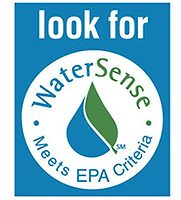PMI Survey: Most Consumers Unfamiliar with WaterSense Products

PMI CEO says water-saving program must be authorized and funded by Congress to create higher awareness.
Three-quarters of 1,000 Google survey respondents said they were unfamiliar with the Environmental Protection Agency’s WaterSense program, which encourages the use of water-efficient toilets, showerheads and faucets. The survey was conducted by Plumbing Manufacturers International.
“The WaterSense program must be authorized by Congress so that it has the funding it requires to generate higher public awareness of how water-efficient plumbing products can save water,” said Barbara C. Higgens, PMI CEO/executive director. “Saving water by using these products is a very practical means that’s unfortunately being overlooked. WaterSense products are readily available now at local stores – and they use at least 20 percent less water than other toilets, showerheads and faucets.”
Consumers also unaware of WaterSense rebate and incentive programs
While 48 percent of respondents felt saving water was important, 67.1 percent of survey participants were unfamiliar with WaterSense rebate and incentive programs and didn’t feel an urgent need to replace older plumbing products with more efficient ones. WaterSense currently lists 101 rebates within 14 states.
Women and older millennials (age 25-34) were more inclined than other demographic groups to value water efficiency and WaterSense products. The Google survey findings are in line with the results of a 2015 PMI study that found slow adoption of WaterSense toilets, showerheads and faucets, even in parts of the nation affected by drought. The study found that, on average, 7.0 percent of the toilets installed nationwide are WaterSense toilets, 25.4 percent of bathroom faucets are WaterSense certified, and 28.7 percent of showerheads are WaterSense certified.




